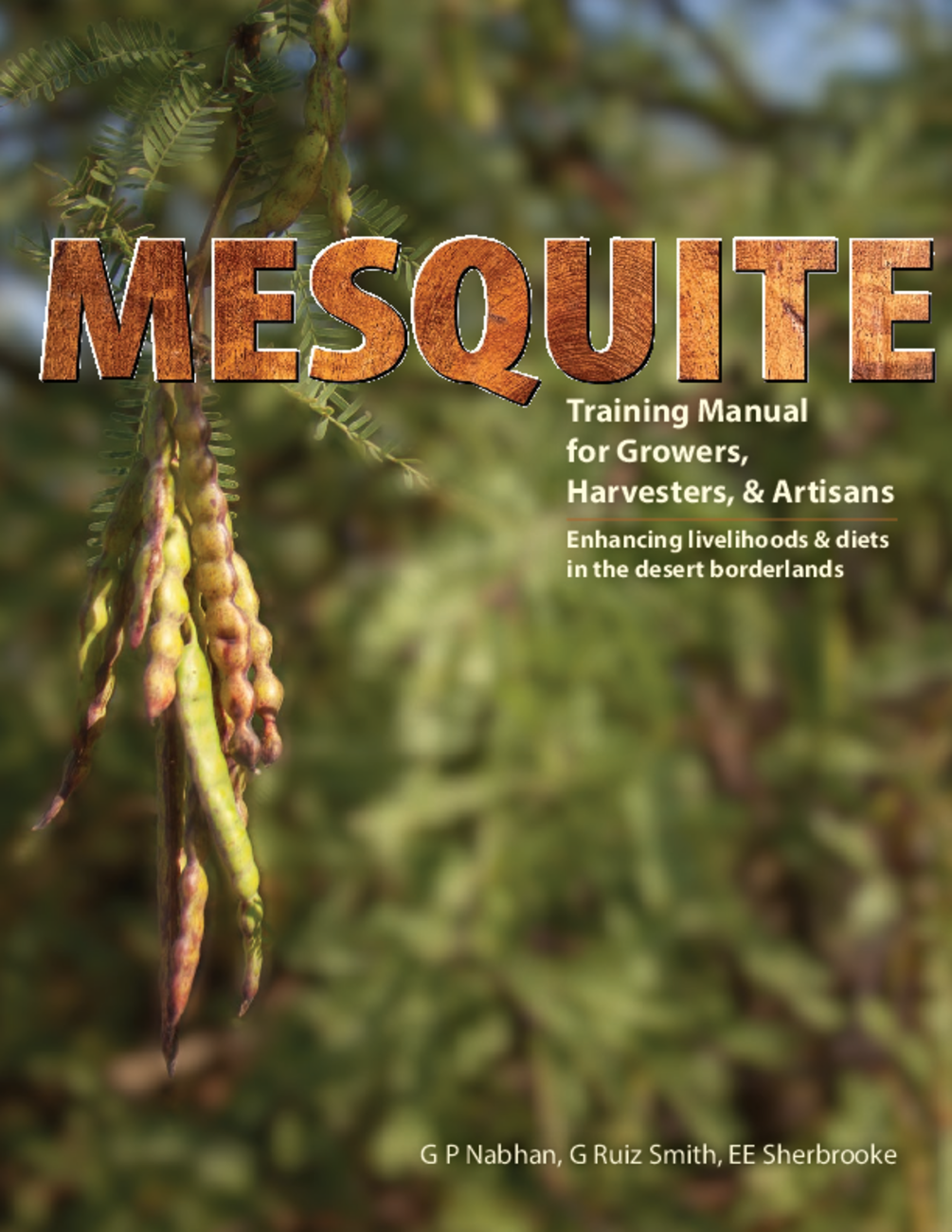Mesquite: Training Manual for Growers, Harvesters, & Artisans
Imagine that you are driving or biking into any one of a dozen small rural communities on either side of the US/Mexico border in the year 2040. You notice a beautiful building that appears as though it were made of locally sourced materials, situated in a shaded mesquite bosque that appears as though it is as meticulously managed as an orchard of high-quality fruit and nut crops.
In fact, these mesquites are being stewarded for their variety of appealing, sustainable, and saleable products: flours and syrups from their pods or “fruits;” fine hardwoods for furniture making, crafts and musical instruments; wines, meads, mesqals and probiotic fermented beverages; liquid smoke to flavor barbecue sauces, rubs and smoking chips; compost, mulch, and biochar; and honey, propolis, pollen, and gums for medicinal and culinary uses.
You see dozens of visitors milling around a solar-powered hammermill in a courtyard in the middle of a sextagonal building, as two students grind the pods into a fine pastry flour, and a delicious, antidiabetic mesquite meal. As you glance around the plaza, you see workshops and gift shops where master artisans are teaching young students and older retirees how to craft wooden spoons and forks and musical instruments from mesquite wood; how to assemble mesquite planks into tables and chairs; how to catch the fumes from mesquite chip debris from the furniture makers and turn them into liquid smoke; and how to make medicinal tinctures, musical instruments, and rope from mesquite roots.
What you are reveling in is one of 12 Mesquite Artisan Training Centers and Showcases that will be found in towns like Los Algodones, California; Patagonia, Sells, and Ajo, Arizona; Agua Prieta, Sasabe, and San Luis, Sonora; Palomitas and Las Mesilla, New Mexico; Janos, Los Algodones, and Ojinaga, Chihuahua; Lajitas, Eagle Pass, and Uvalde, Texas; Musquíz, and Cuidad Acuña, Coahuila. The professional trade training certificates granted to students who intern six months with master artisans at any of these Training Centers are transferable to either side of the border. In addition to training four hours a day with one of six master artisans in residence at any center, student interns are asked to spend two hours a day in the gift shops that market products crafted by both masters and apprentices.

